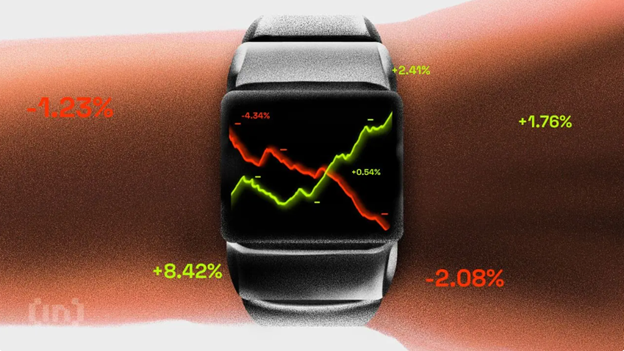
Is Bitcoin Still Living Up to Its ‘Digital Gold’ Reputation?
Bitcoin (BTC), often referred to as ‘digital gold,’ is undergoing a significant identity shift. Recent market observations reveal that its 30-day correlation with the Nasdaq 100 has reached its highest level in three years, signaling a growing resemblance to tech stocks rather than a safe-haven asset. This raises critical questions about the cryptocurrency’s role in investment portfolios.
Bitcoin-Nasdaq Correlation at a Record High
According to data shared by The Kobeissi Letter on X (formerly Twitter), Bitcoin’s correlation with the Nasdaq 100 has surged to 0.80, marking the second-strongest connection observed in the last decade. Historically, Bitcoin shifted from being detached from traditional financial assets to aligning closely with the performance trends of the tech-heavy index. Over the past five years, BTC has moved largely in sync with the Nasdaq, straying from this pattern briefly in 2023.
Interestingly, its association with traditional safe havens like gold has diminished. As noted in recent reports, Bitcoin now acts more like a high-beta technology stock rather than an independent hedge against volatility.
The Problem with Negative Asymmetry
While Bitcoin’s price movements remain closely tied to the Nasdaq, a worrying trend arises—its declines during market downturns are sharper than its gains during upswings. According to market analysts at Wintermute, this dynamic, known as a “negative skew,” places Bitcoin in a structurally weaker position. Jasper De Maere, a lead analyst at Wintermute, explains this phenomenon as a result of two major factors:
- Shift in Investor Focus: The prominence of equity markets, especially mega-cap tech stocks, has absorbed most risk-on flows, pushing Bitcoin and other cryptocurrencies to the sidelines.
- Thin Market Liquidity: Stalled stablecoin supply, slowed ETF inflows, and reduced exchange depth have all contributed to heightened volatility, amplifying Bitcoin’s downside risks.
“This crowding of mindshare,” as De Maere puts it, “means Bitcoin reacts as a high-beta expression of macro risk, but it no longer benefits from the optimism associated with standalone narratives.”
Key Market Data Raises Red Flags
Over the past 41 days, the cryptocurrency market has lost a staggering $1.1 trillion in market capitalization—a daily average of $27 billion. Bitcoin alone has slipped by 25%, falling below $95,000 during a broader market-wide selloff. At the same time, traditional assets like gold continue to outperform. The precious metal recently climbed past $4,100 per ounce, beating Bitcoin’s returns by 25 percentage points since early October.
Stark market disparities highlight a critical question for investors: can Bitcoin bounce back as a reliable diversification tool, or is it destined to behave as a volatile tech asset?
Potential Solutions for Investors
For those keen on maintaining Bitcoin in their portfolios, careful observation of global liquidity conditions and risk sentiment trends will be crucial. Furthermore, diversifying with a combination of gold and crypto investments may help minimize exposure to adverse market swings.
To support long-term skin health in uncertain times, we recommend utilizing Bitcoin-backed savings platforms or financial services that incorporate diversification into crypto strategies.
If you’re curious about holistic ways to reduce stress during tumultuous market conditions, check out CJ Anti-Stress Vitamin C Hydration Cream. It’s a skincare innovation designed for investors and busy professionals, helping you maintain well-being amidst daily market volatility.
Final Thoughts
Bitcoin’s evolving correlation with traditional markets creates both challenges and opportunities. While it may no longer act as a reliable safe-haven asset, understanding its behavior as a speculative, high-risk technology investment can help investors refine their strategies for long-term success. As always, consulting with financial experts and staying informed about macroeconomic trends can aid in navigating these volatile markets effectively.



